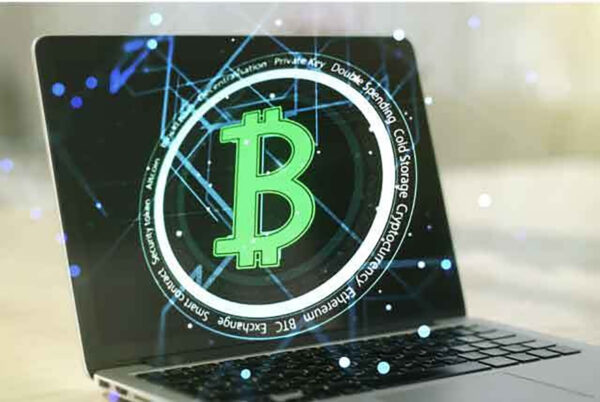Your gift this holiday season — a peek inside the mind of Investment Advisor Steve Henry!
If you’ve known Steve for a while then you know he’s a deep thinker and a voracious reader. It’s one of the things that makes him quite good at his job. For this month’s email newsletter we asked Steve, “What’s been on your mind, lately?”
So, here you go…
Electric Vehicles Will Help Boost Natural Resource Commodity Prices
Our research shows that in order for the world to reach 20% electric vehicle usage there would have to be a giant leap in natural resource mining since EVs are heavily reliant on things like copper, silver, and other earth minerals. For example, in order for 20% of all vehicles on the road to be electric, we would have to have a 600% increase in copper output and a 300% increase in silver output! This would require reopening mines that have been closed for decades, many of which lie in recreational areas. I wonder how the Sierra Club would feel about that? Pick your poison, I guess. Either way you look at it, EVs are a boon to natural resource commodity prices…
Energy Source Transitions Are Never Simple
Speaking of EVs, never before has mankind moved from a less dense energy source than the energy source it replaces. From horses to coal to oil and gas, these were all moves up in density and thus, productivity.
If oil equals X and EVs equal less than X, the difference has to be made up by something. Isn’t that a step backward?? I get it though. Ultimately, we use less of the bad stuff and more of the good. EVs might be very practical in some locales such as metropolitan areas, but like I keep saying, a giant leap in battery technology is needed — but not guaranteed in my lifetime.
Warren Buffet’s largest investment in the last 18 months has been Occidental Petroleum (OXY). Here’s a little-known fact, Occidental has plans for 78 carbon scrubbing facilities by 2040. I wonder if that factors into Buffett’s investment decision. The media doesn’t even talk about this.
What I do know is that OXY oil reserves are all in the US and Canada, unlike the biggies (Exxon and Chevron) whose assets are worldwide, including some less-than-hospitable jurisdictions.
Buffett loves US oil assets and stated that’s one reason for Berkshire’s investment in OXY.
Speaking of Berkshire, co-chairman Charlie Munger thinks using our own oil reserves now is a mistake. “20 years from now, long after I’m dust, the oil will be much more valuable than it is today. We should be using other people’s oil and hoarding our own.” Charlie is always a few brain cells ahead of most of us, so he’s almost certainly right. The issue is, how painful would it be to do so? China and Africa are ramping up their oil output, but demand is also going up. Can we get to the other side without seeing $300 a barrel?
Market Math Isn’t As Important as One Might Think
Goldman Sachs says the S&P 500 will finish 2023 at around 4000. As of this writing, it’s at 3950. Not a very exciting year.
Let’s look a little deeper. Most estimates are telling us the S&P will earn around $220-230 a share in 2023. 4000/230 equals a PE or price-earnings ratio of 17. The historical average is about 15-16. By that metric, the US stock market is not cheap and is still priced above average. That’s the math of the market. Helpful to know sometimes, but…
Understanding the math of individual investments is actually more important and CSH’s specialty.
Cryptocurrencies: Always Be Skeptical of the Next Greatest Money-Making Trends
The entire market cap of cryptocurrencies is around $850 billion today. The market’s liquidity is only as good as the fiat currency (paper money) that backs it up. Which, incidentally, is only a tiny sliver of $850B.
Think about that for a second. Cryptocurrency can only be as good as the existing cash supporting it. Or to look at it another way — if the 10 largest owners of crypto decided to liquidate into currency, could they even do that??
The Magic of Compounding Interest
If you’re under 40, investing is simply a numbers game. It’s not WHAT you’re investing in but HOW MUCH you are regularly investing.
If you start investing $2000/year at the age of 27 and continue until you are 65, you will end up with about $805,000, assuming a 10% rate of return.
HOWEVER…
If starting at 19, you invest $2000 annually until 27, and don’t add a dime all the way to age 65, this will give you about $1.02 million at a 10% rate of return.
It’s the magic of compound interest. Sadly, most 19 years old don’t even know what compound interest is, let alone imagine what life will be like at the age of 65 (and how nice it would be to have a million dollars socked away).
More Random Thoughts About Bad Advisors, Inflation, and Bonds
- It really bothers me when advisors don’t take care of their deceased clients. I recently had a situation with one of my clients that involved working with another financial advisor. In addition to the loss of a loved one, this client was up against a mountain of paperwork, most of which they’d never dealt with before. It seemed easy enough that this other advisor could actually be an advisor and give advice (since they deal with these things all the time), however, that wasn’t the case. And it makes me really mad. Even when our clients are deceased, we should be willing to make life a little easier for their executors and loved ones.
- Inflation and interest rates are gravity to stocks. And right now, we’re seeing inflation AND interest rates go up.
- Bonds are starting to look somewhat attractive after a half-decade of return-free risk. For those in higher brackets, municipal bonds have fallen nearly 30%. With tax-free yields nearing 5% and some of these funds selling for 15-20%, discounts to their liquidation or net asset value, it reminds me of my younger days. And this is a good thing.


